On Easter Saturday I decided to take advantage of the good weather and get out for walk. Travelling over the Easter holiday isn’t always an easy experience – the roads can be jammed and engineering works can make train travel difficult. However, I didn’t have any problem taking the direct train from Wigan to Todmorden for a walk I’d been planning for a while up to the Bridestones up on the hills to the north of the town. I wanted to take a look at the collections of millstone grit outcrops, with stones weathered into weird and wonderful shapes, of which there are a number up on the moors here.
I’d based the walk on a route in The West Yorkshire Moors by Christopher Goddard which I’d bought during a visit to Hebden Bridge a few years ago. It provides a good guide to this part of the Pennines with suggested walking routes with hand drawn maps including directions, walking instructions and background information. I didn’t follow his route exactly – I made a couple of “deviations” but it helped me navigate the otherwise potentially confusing web of paths up on the moors.
Looking up to the moors from the town as I left the station I could see that it was a little foggy, but it was burning off and I expected it to have cleared by the time I got up there – I wasn’t wrong!
I walked through the streets of terraced houses and started the steep climb up the steep rise of Meadow Bottom Row, passing a series small rows of of terraced houses set perpendicular to the road
and then past some interesting old houses
The road had turned into a track by now and I turned off down a path that took me through some woods and then up onto the moor
near the golf course and the first collection of millstone grit outcrops that I’d encounter during the walk – the Butt Stones.
I climbed up to take in the view over the moors and down towards Todmoden (I had no interest whatsoever in the golf course!)
After clambering back down I joined the Calderdale Way which, here, takes the route of an ancient lane. In the old days travellers would have followed trails high up on the moors rather than have to traverse through the wet and boggy valleys. Albeit the moors up here would also be described as such (and still are!) but it would have been worse down in the valleys.
It was easy walking along the path which climbed gently along the side of the moor. The path was contained between dry stone walls with fields on either side – there were several lonely farms up here.
In one of the fields I spotted some rather peculiar flat faced sheep which looked rather like four legged Teddy Bears. I’d never seen anything like them before. A little research suggests that they might have been Southdown sheep, although I’m no expert and could easily be wrong.
I approached Whirlaw and this is where I made my first deviation off the route, taking the path around the hill up towards Windy Harbour farm
joining the Todmorden centenary Way I encountered the stone carving of the Wizard of Whirlaw – looking like a Yorkshire version of an Easter Island statue.
I haven’t been able to find out who carved this statue, but it was inspired by the novel of the same name, published in 1959, written by William (Billy) Holt, a well known character round these parts. I first came across him way back in the 1970’s when I read Millstone Grit, a book of a 50 mile journey around the Pennine towns of what was then the West Riding of Yorkshire and East Lancashire, which includes an interview with the 77 year old Billy. His life story is fascinating. He started work in a mill when he was 12 years old, but although he didn’t enjoy school he had a tremendous thirst for knowledge, teaching himself German. Like many working class men he joined up in 1914, seeing it as an opportunity to experience some excitement away from the monotony of the mills. After the war he became politicised, joining the Communist Party and leading a protest against the Means Test that led to a 9 month prison sentence. He stood for the local council while he was in jail and, although he didn’t win, came close to defeating the prominent sitting Councillor. However, on leaving jail he stood again and this time was elected.
He became a newspaper correspondent, travelling abroad to countries including Russia and covering the Spanish Civil War and also during and after WW2 did broadcasts for the BBC. Later on he ran a pioneering mobile library service and developed a ‘model’ farm. At the age of 66 he made a trip across Europe on Trigger, an aging ex-rag-and-bone horse he’d rescued. And as he clearly had time to spare(!) he took up painting and writing, authoring several novels and autobiographical works including the Wizard of Whirlaw.
I carried on along the path until I came to the collection of boulders that comprise the Whirlaw stones
I scrambled up on to the top of the rocks to take in the view
before carrying on and re-joining the Calderdale Way
After a short while I came to a squeeze stile which I squeezed through heading north up the hill through the heather
climbing up towards Bridestones moor
and cutting across up to the summit of the ridge and the main collection of shattered, weathered rocks
I’d reached the Great Bride Stones
There were a number of climbers “bouldering” – scrambling up the gritstone boulders
This collection of Millstone Grit rock formations stretches for about half a mile along the ridge. The rocks have been eroded by the wind and rain creating weird and wonderful shapes
The most famous being the Bottleneck Bride, a large boulder precariously perched on a narrow neck of rock.
There was, apparently, a groom stood next to “her” once upon a time, but today “he” lies prone on the ground next to her having fallen over – or deliberatly knocked down – some time in the past.
There are other Bridestones on Staindale Moor, within Dalby Forest, on the edge of the North York Moors and a prehistoric cairn near Congleton in Cheshire bears the same name.
No-one knows for certain how these rock formations got their name, but one theory is that it is derived from the Celtic diety Bridia, also known as ‘Brigantia’, the goddess of the Brigantes tribe who lived in this part of England before the Roman Conquest.
I spent some time here looking around the rocks before setting off again following the path along the ridge.
before cutting across and taking the path heading down hill by Redmires Water.
At the end of the path I was back to Stony Lane and the Calderdale Way.
I turned left and followed the track and carried on for a while until I turned off down another track towards the next set of rocks the Orchan Stones, passing a couple of friendly ponies in a field by the junction
Reaching the Orchan Stones
I clambered up to the top to take in the views
It was time to start my descent back down to the town. My route took me past Lower hartley Farm where I was “greeted” by two sheepdogs who started barking loudly as soon as the saw me. Luckily they were in the farm yard and garden and weren’t able to get out.
After crossing the field and along a track I started to descend
down to Rake Farm
The 16th Century farm house had been done up very nicely
I carried on down the farm track, passing another farm
and shortly after that I reached the edge of the town. I walked through a housing estate and then took a path through the woods and fields back to Meadow Bottom Row.
Passing the little streets of terraced houses I descended and was soon back into the main part of the town down in the valley.
The trains to Manchester are very regular but I wanted to catch the one that went straight back to Wigan without the need to change at Manchester Victoria, so I had about 40 minutes to wait. I had a bit of a mooch around the town centre and bought myself a couple of tins of diet coke from Aldi (I didn’t fancy a hot drink but needed some liquid with some caffeine).
Arriving back at the station I didn’t have too long to wait for my train



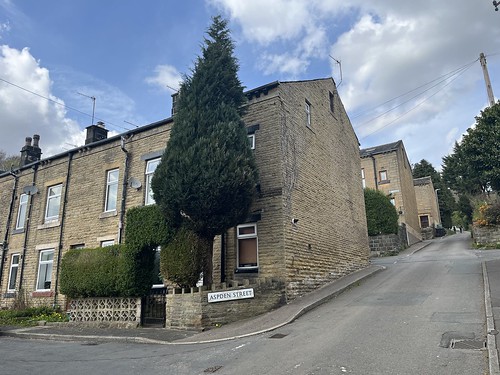


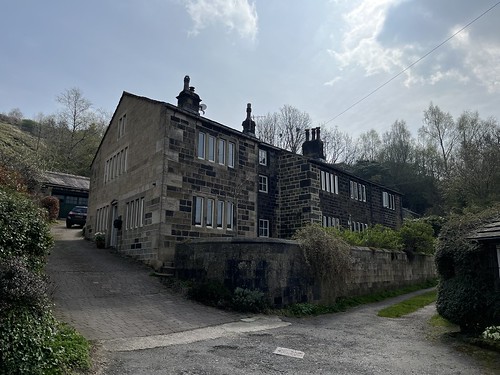









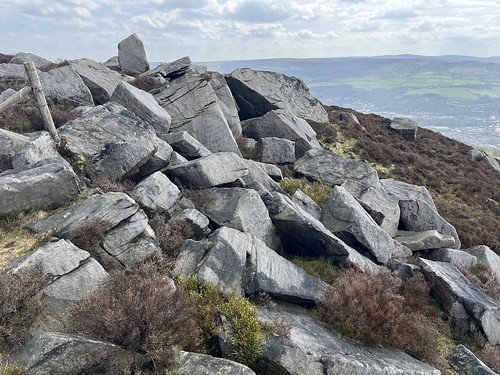

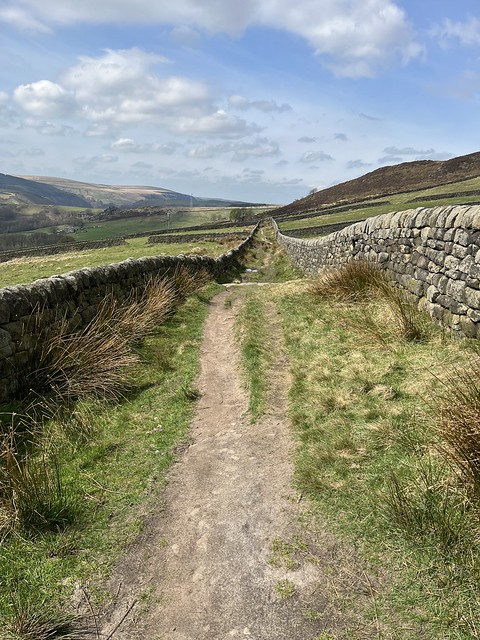



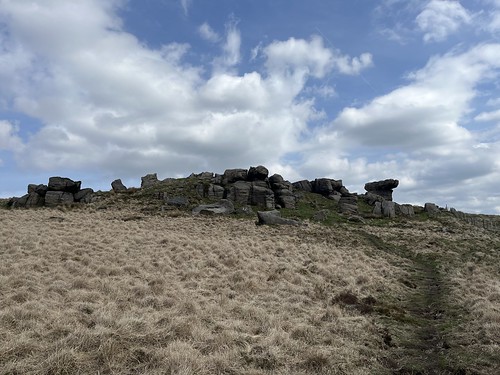
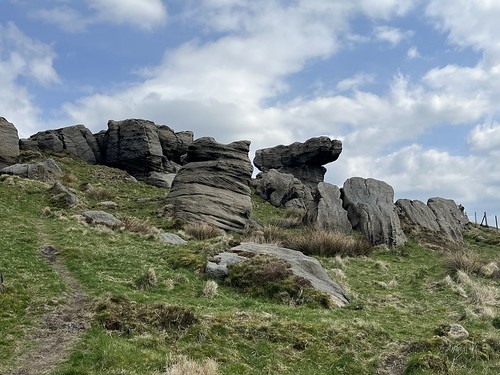
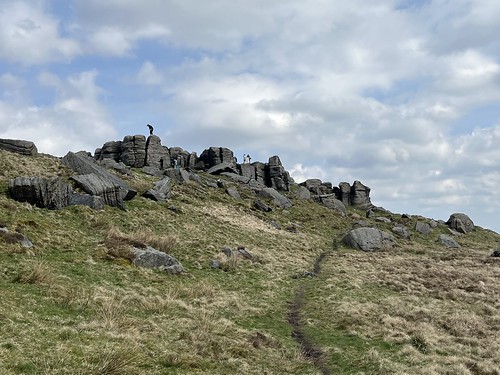


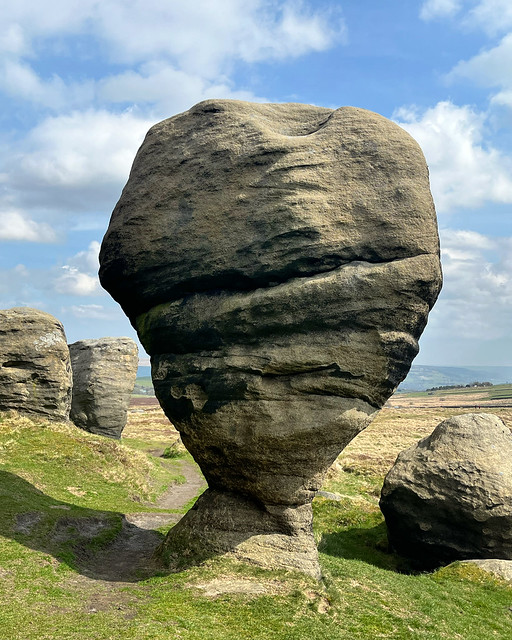
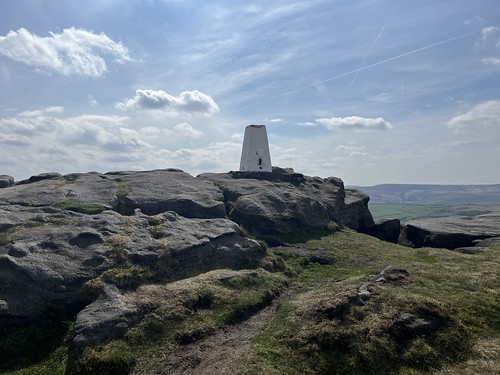
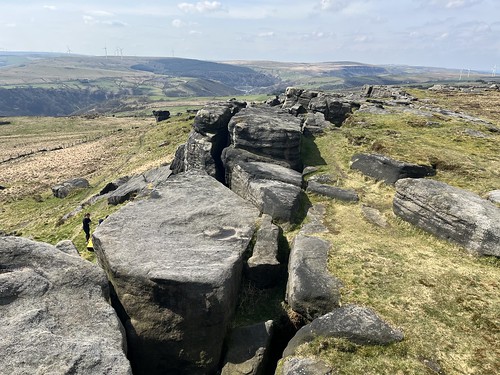

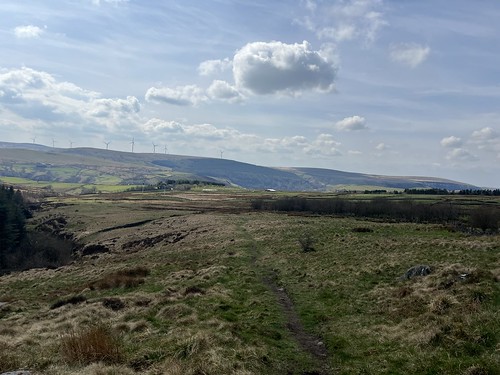

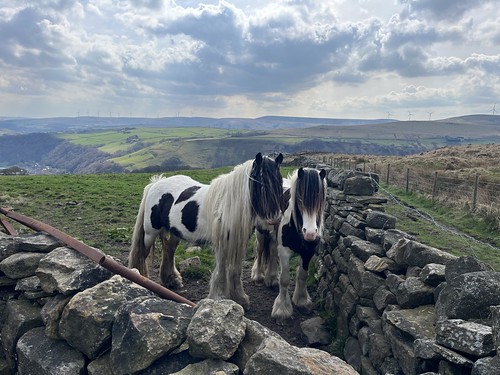


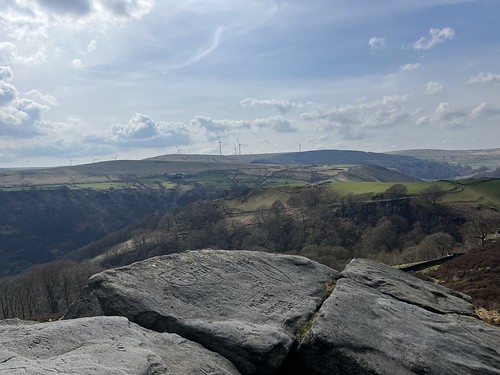

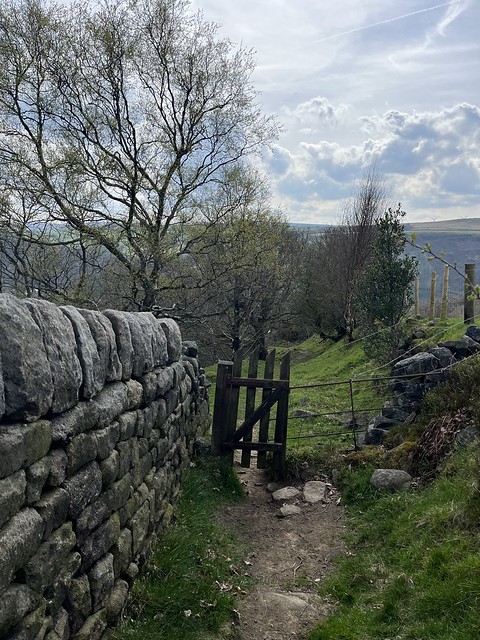
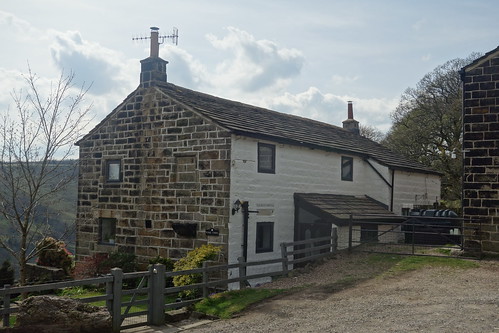


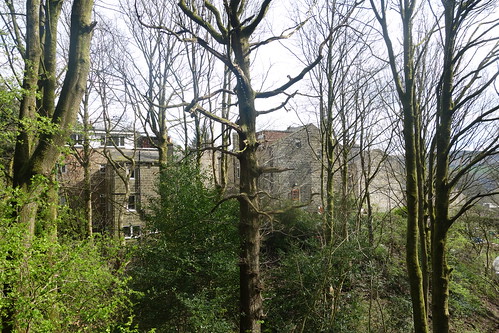

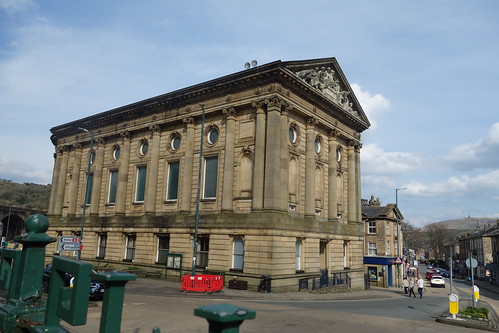
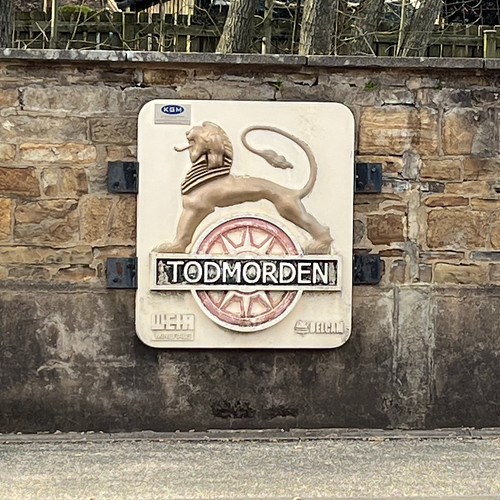
Looks like a fab place for a walk. I would love to see the Bridestones and The Wizard. Thanks for such an informative post.
Thanks Shaz. I probably went a bit over the top with the info but there’s a lot of history in those dark valleys and wild and windy bleak moors
What a lovely walk! So much of interest. Billy Holt sounds a fascinating character. I particularly liked the pioneering mobile library service.
I’m not surprised given your background 📚
A good walk with some great views and you certainly had a lovely day for it. Billy Holt sounds like a very interesting character and the Bridestones remind me of the weird and wonderful shapes of Brimham Rocks.
If I’m right I think those wind turbines in the distance are on the back side of England’s second largest onshore wind farm Scout Moor, which is just above the animal sanctuary I regularly go to just beyond Ramsbottom – which no dobt you already know anyway 🙂
I’m not 100% sure. There’s a large wind farm between Littleborough and Tod and I think that that’s what they might be. But it is possible that they were at Scout Moor.
I’ve never been to the Brimham rocks, but I believe they are similar.
What a good route. Lots of interest and travel by rail to boot! Superb country, and not somewhere I know.
With the direct train it’s easy for me to get over to the Calder Valley. I’ve done a few walks up that way and there’s more to explore. The countryside is not unlike our beloved West Pennine moors, but it’s good to explore a different area
The sculpture of the Wizard is amazing 😍.
It is cool!
For some reason, changing computers?, I have been missing your excellent outings. I’ve some catching up to do.
I always thought that The Calderdale Way was one of the best short long distance ways in England.
Good to see the Bridestones. We used to boulder there years ago before bouldering mats were invented. Last time we went back we scared ourselves at the height of some of the problems previously played on. The Bridestone and the Egg problems are now off limits to avoid further erosion.
Thanks for your kind comment. Looking at some of the rock formations there I almost felt like I could tackle them. But reading your comments realise that would be foolhardy 😂
I used to live up that way (Silsden, near Keighley) but rarely walked on the hills around the Calder Valley or the Lancashire border. I was still a bit obsessed by bigger mountains and foolishly ignored what was on my doorstep. I can see now what I was missing. I had no idea that Toddy, had such a fine collection of edges and boulders. Excellent walk packed with interesting stuff.
The Calder Valley is easily accessible by train for me and there’s a few more routes I have in mind for days when I don’t fancy driving up or down the M6 !
Pingback: Coiner Country | Down by the Dougie